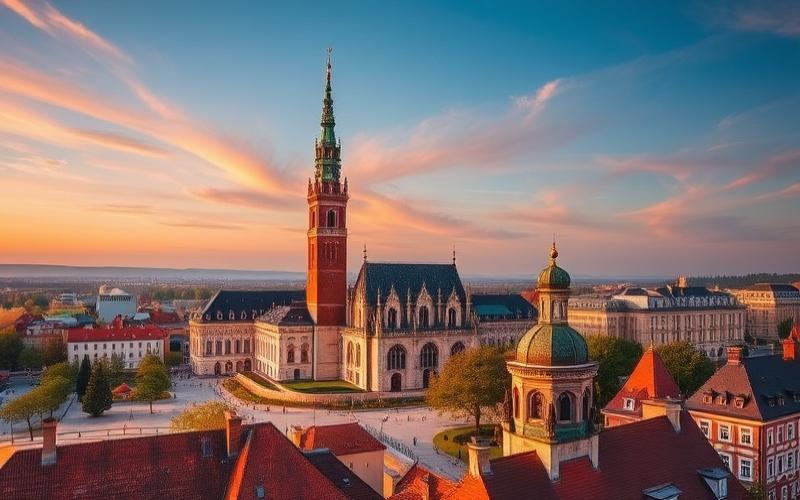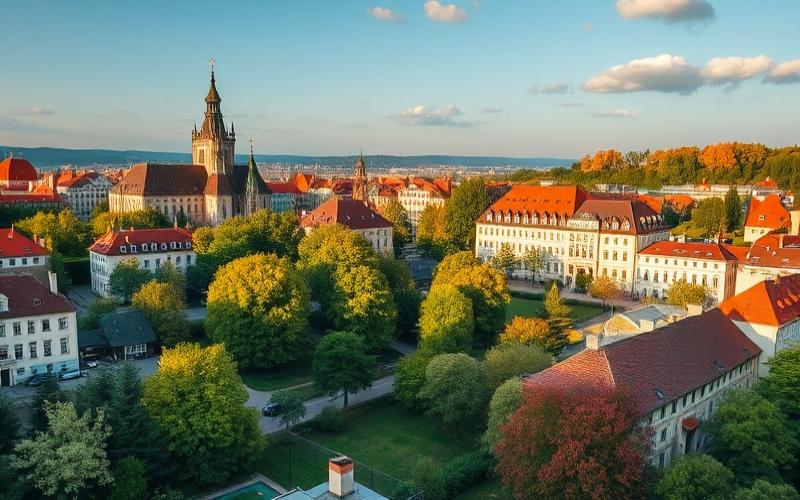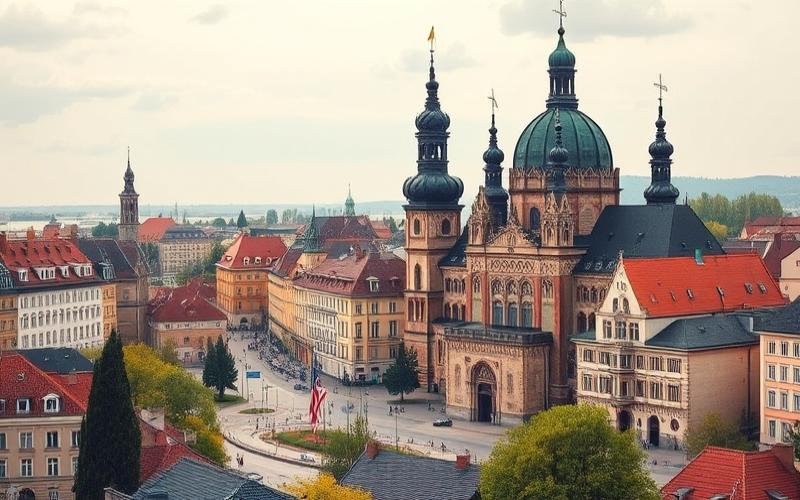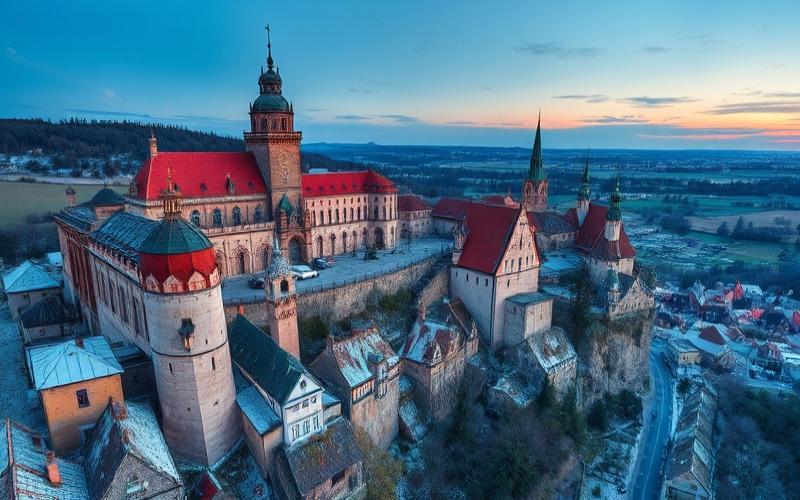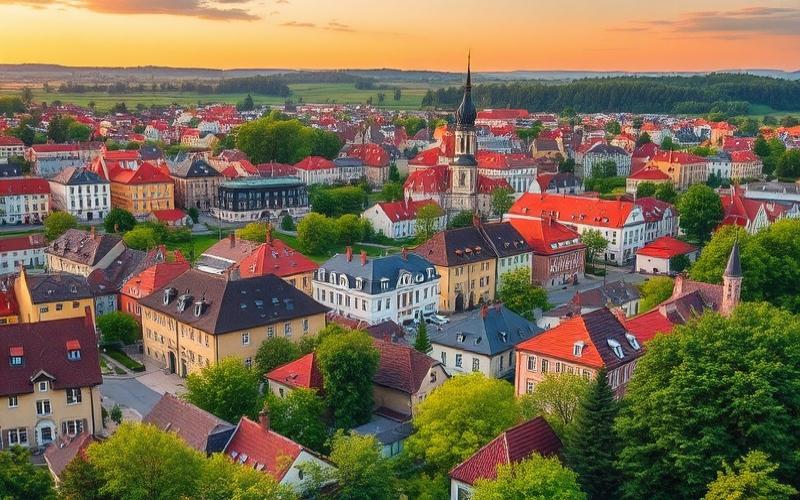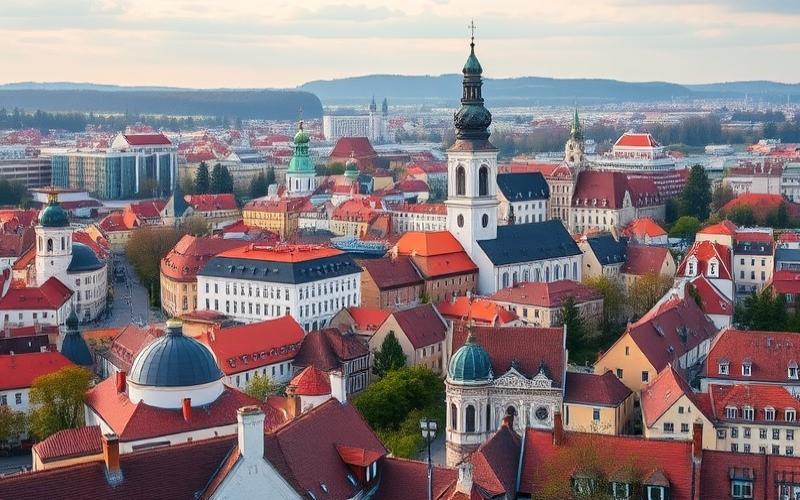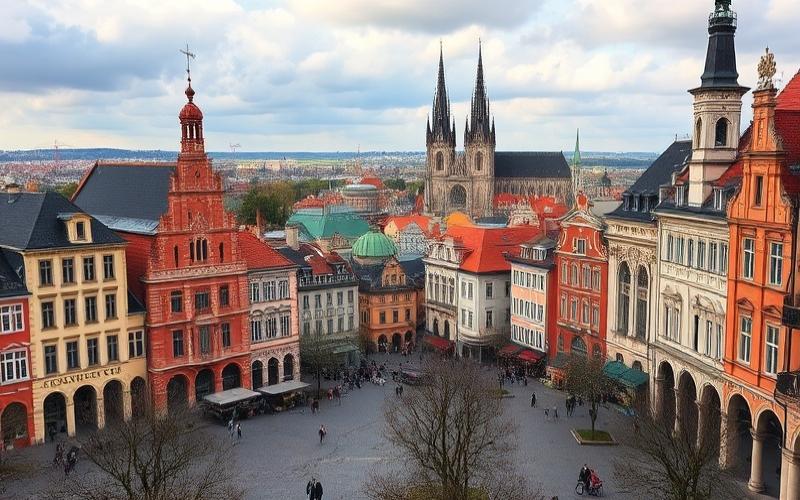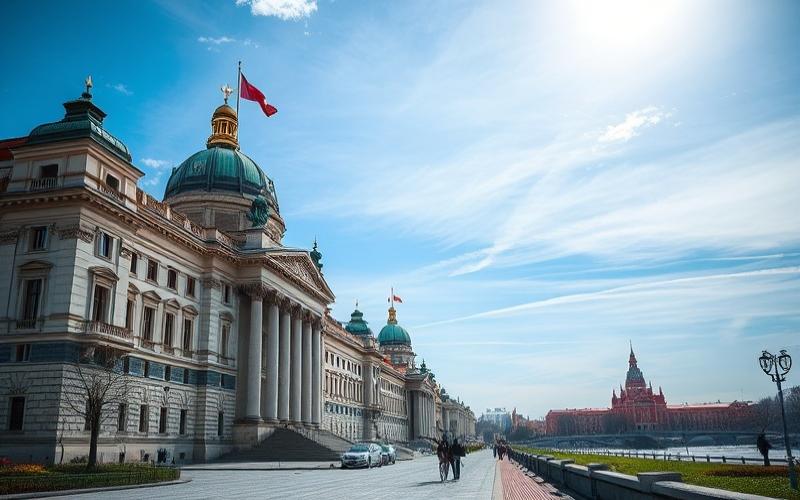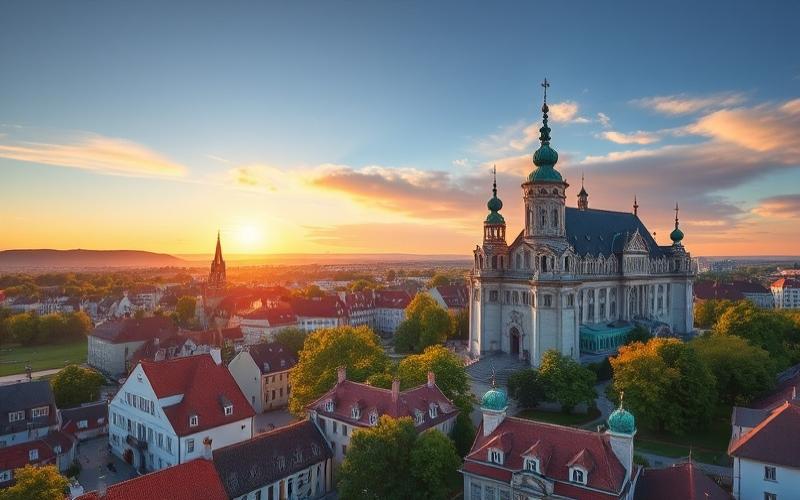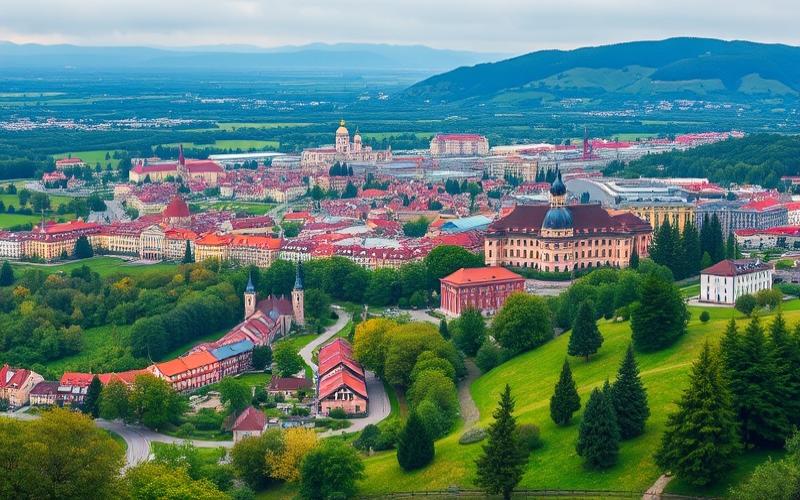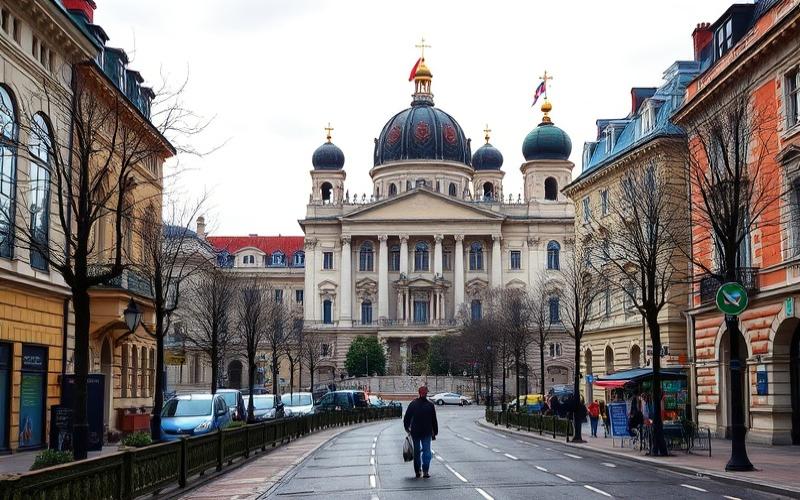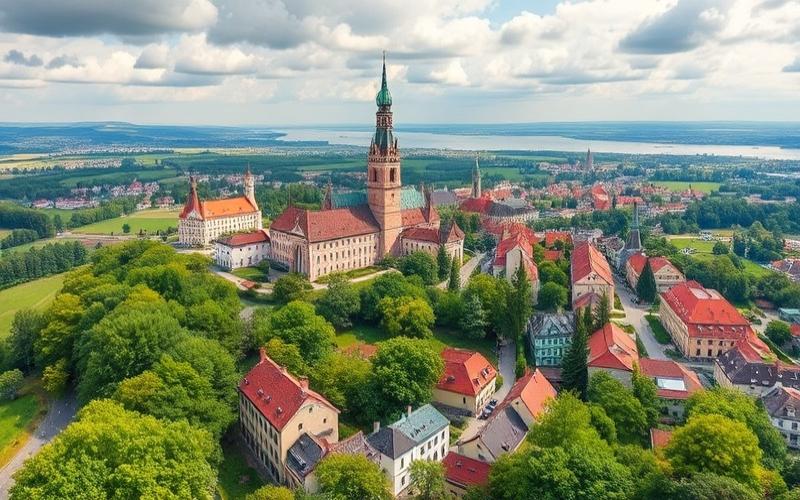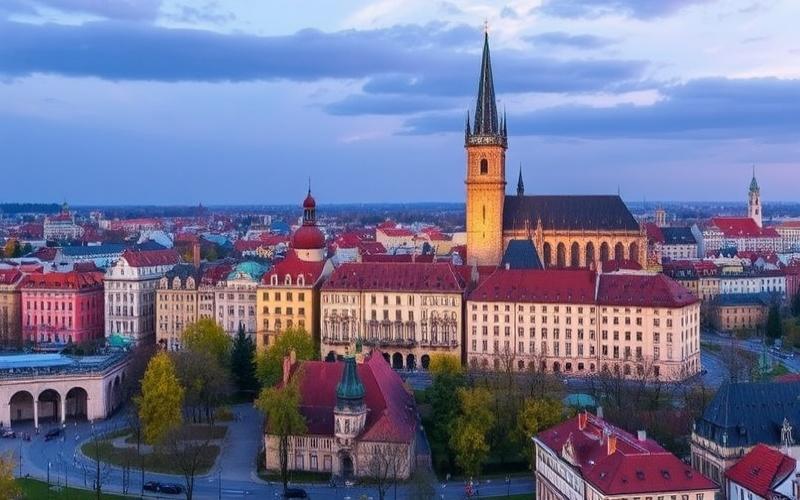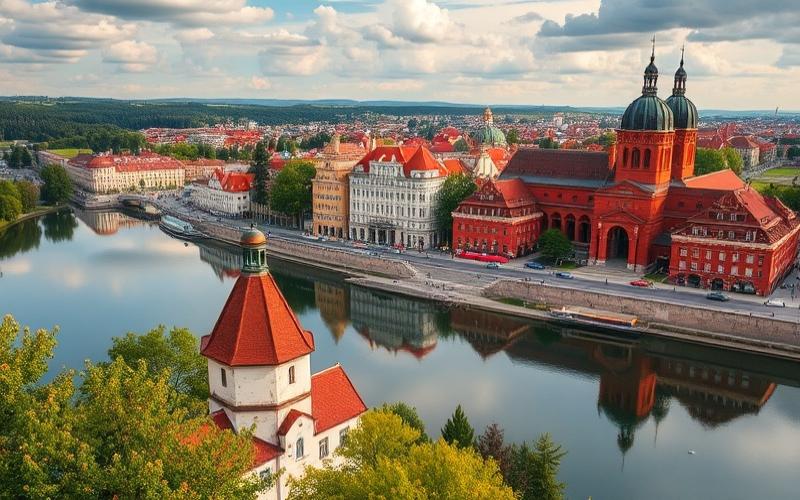
 Published on and written by Cyril Jarnias
Published on and written by Cyril Jarnias
Micro-Apartments: An Innovative Solution Amid Soaring Prices
Amid skyrocketing real estate prices in major Polish cities, micro-apartments are emerging as an innovative solution for those seeking to balance comfort with limited budgets.
These living spaces, often smaller than 30 square meters, provide functional and affordable housing for:
- Young professionals
- Students
- Anyone wanting to live in the heart of the city without breaking the bank
Good to Know:
In response to growing demand, more and more real estate developers are choosing to invest in this type of housing.
Transforming the Urban Landscape
This trend is transforming the urban landscape and revolutionizing household consumption habits. These small wonders require:
- Creativity
- Efficiency
They challenge our traditional perception of housing and offer an appealing alternative to the social and ecological footprint of conventional homes.
Understanding the Rise of Micro-Apartments in Poland
The growth of micro-apartments in Poland results from a combination of economic, social, and political factors transforming the urban housing market.
Economic Factors:
- Poland’s housing index reached a record 213.20 points in the first quarter of 2025, compared to a historical average of 127.24 points since 2010.
- In Warsaw, the average price per square meter increased by approximately 50% between 2015 and today, reaching nearly 15,000 PLN (about €3,000) per m².
- Rents continue to rise: the annual increase was about 4.2% in early 2025; the national average rent reached 3,581 PLN ($925) per month in March 2025.
- Rental demand is fueled by rising purchase prices and high mortgage costs.
| City | Average Price /m² (PLN) | Year-over-Year Change |
|---|---|---|
| Warsaw | ~15,000 | +50% since 2015 |
Social and Demographic Factors:
The total number of households is increasing despite low birth rates (1.32 children per woman), driven by rising singlehood and divorce rates.
Mass influx of Ukrainians (+1 million since the war), mobile young professionals, and international students seeking affordable or temporary housing.
Family structure is evolving toward more single-person households or households without children.
- Increase in single-person households
- Growing number of international students
- Greater mobility among young professionals
- Preference for rental flexibility
Government Policies & Urban Initiatives:
Facing an estimated deficit of 1.5 to 2 million housing units, some municipalities encourage urban densification through rapid construction of compact units.
Some “pathodevelopers” exploit this regulatory gap to market sometimes extremely cramped apartments – a criticized but tolerated phenomenon in some cases to address the acute shortage.
- In Warsaw, Krakow, and Wrocław, several recent projects offer exclusively studios smaller than 25 m², with kitchens integrated into the entryway or minimalist bathrooms.
- Some private student residences even offer “micro-studios” around 16–18 m², fully equipped to maximize every square centimeter.
Public Reactions:
“This type of offering sparks much debate in Poland. Some denounce a qualitative degradation (‘bedroom boxes’), while many see it as a pragmatic solution to prohibitive prices. Young professionals often appreciate this flexibility; however, citizen associations demand stricter minimum standards.”
| Factor | Impact on Micro-Apartment Growth |
|---|---|
| High real estate costs | Search for smaller spaces |
| Strong rental demand | Pressure on available stock |
| Changing family structure | Smaller households = smaller needs |
| Migration/students | Search for affordable/temporary solutions |
| Policy responses | Partial tolerance/regulation |
⬛️ Micro-apartments are establishing themselves as a controversial but unavoidable response to the current supply-demand imbalance in major Polish cities.
Good to Know:
Poland is experiencing a notable increase in micro-apartments due to decisive economic and social factors. With an 8% rise in the cost of living and real estate prices in major cities like Warsaw and Krakow in 2023, these small living units have become a popular solution for many young professionals and students on tight budgets. Demographically, the growth of this dynamic population stimulates demand for affordable housing. Government policies, including subsidies for social housing and tax incentives for real estate developers, promote the development of micro-apartments. Specific projects, such as modular spaces set up near university campuses in Warsaw, are generating growing interest, although some critics mention cramped living conditions. These urban initiatives are largely well-received, particularly for their contribution to urban densification and housing accessibility.
Investing in Polish Studios: A Unique Opportunity
Investing in studios in Poland offers notable economic and strategic advantages, particularly due to the growing demand for micro-apartments, a trend driven by rapid urbanization, the rise of remote work, and the attractiveness of the Polish market to young professionals, students, and expatriates.
Economic and Strategic Advantages:
- Increased profitability: Studios show higher rental yields than larger spaces due to strong urban demand.
- Rental flexibility: Short or long-term leasing facilitated by increased population mobility (young professionals, international students).
- High liquidity: Quick resale possible thanks to a broad base of buyers (private or institutional investors).
- Resilience during crises: Small spaces remain in demand even during economic uncertainty.
| Advantage | Explanation |
|---|---|
| High rental yield | Attractive rents relative to low price per m² |
| Limited risk | Easy relocation |
| Financial accessibility | Moderate initial investment |
Current Polish Real Estate Market Trends:
Despite the general rent increase since 2022, the market remains affordable compared to other major European capitals.
Studios rent for between 2300 PLN (Wroclaw) and 4000 PLN (Warsaw), approximately €500–900 depending on the major city.
Attractiveness is reinforced by a continuous influx of international students (+7% on the national social registry) as well as young workers from Ukraine and Belarus.
Target Audience List:
- Young professionals seeking proximity to their workplace
- Students attracted by Polish educational quality
- Expatriates benefiting from local economic dynamism
Return on Investment (ROI) Potential:
The structural shift toward remote work increases demand for well-located individual housing. Accelerated urbanization drives needs for modular small units. The average occupancy rate often exceeds 95% in major university cities.
| City | Studio low/mid/high (€) |
|---|---|
| Warsaw | ~650 / ~800 / ~950 |
| Krakow | ~550 / ~700 / ~850 |
| Wroclaw | ~520 / ~650 / ~820 |
Recent statistics:
> “Poland now has over 1.13 million foreign workers; rental demand in this segment has increased by nearly 15% since early 2024”
> “Studios represent up to one-third of new rental properties on the Warsaw market”
> “Estimated average gross annual yield around 6–8% for this type of investment”
Investor Testimonials:
“I invested in two micro-apartments in Krakow; they have been continuously rented since their acquisition in late 2023. The net return exceeded my initial expectations thanks to the constant flow of international students.”
“Management is simplified with this format: low maintenance, quick but continuous turnover – ideal as a first real estate investment in Central Europe.”
Good to Know:
Investing in studios in Poland presents a unique opportunity, particularly due to growing demand for micro-apartments, ideal for young professionals, students, and expatriates attracted by the market’s financial accessibility. With prices averaging 30% lower than in other European capitals and rental yields often reaching 8%, the Polish market is undeniably attractive. The rise of remote work and urbanization further increase this interest, enhancing the profitability of such investments. According to a recent study, 60% of new residential projects in Warsaw included micro-apartments in response to this trend. Investors who have already seized this opportunity highlight rapid value appreciation, especially in dynamic cities like Krakow and Wrocław, where the real estate market continues to expand constantly.
How Small Spaces Optimize Yield in 2025
Micro-apartments in Poland in 2025 focus on optimizing space and energy resources through innovative technological and design solutions.
Current Trends and Technological Innovations
- Micro-apartments, often smaller than the regulatory 25 m², are multiplying despite restrictions. To bypass legislation, some developers register them as “commercial spaces” or “service units.”
- Integration of smart home systems enables intelligent management of heating, low-consumption LED lighting, and connected appliances.
- Enhanced thermal insulation, triple-glazed windows, and double-flow ventilation help reduce energy consumption.
Smart Interior Design
| Solution | Description | Main Advantages |
|---|---|---|
| Multifunctional furniture | Murphy beds, convertible sofas | Immediate space saving |
| Optimized storage | Floor-to-ceiling wall cabinets | Optimization of available volume |
| Modular partitions | Dynamic space separation based on use | Daily flexibility |
| Extendable tables | Variable use depending on number of users | Adaptability for guests/work |
List of common innovations:
- Built-in compartments in stair steps or under floors
- Compact appliances: integrated flat-drum washer/dryer
- Shared spaces (communal laundry, collective lounge)
Economic Impact on Cost of Living
Key points:
- The price per square meter in major Polish cities has increased significantly; micro-housing has become more accessible for young professionals or students.
- By reducing housing size and sharing certain services (common rooms), it’s possible to lower the overall rent while remaining close to the city center.
Comparative table:
| Criterion | Warsaw Micro-Apartment | Standard Warsaw Apartment |
|---|---|---|
| Average surface | ~18–25 m² | ~45–60 m² |
| Estimated monthly rent | ~1200–1800 PLN | ~2500–4000 PLN |
This accessibility particularly attracts budget-conscious populations or those seeking temporary housing.
Government Policies & Private Initiatives
Summary list:
- Regulation imposing a legal minimum surface (25 m²), but circumvented via commercial status.
- Limited tax incentives for this segment; few direct aids but strong private activity due to inflationary context.
Private pilot projects invest in sustainable construction: local ecological materials, high energy certification.
Comparison with Other European Countries
Summary table:
| Country | Legal Min. Size | Innovative Solutions | Public Policies |
|---|---|---|---|
| Poland | 25 m² (circumventable) | Multifunctional furniture, smart home, commercial use | Low public support; private development dominant |
| France | 9m² individual room; capped rents | Transformable furniture, urban co-living | Social housing aids; strict regulation |
| Italy | No single national threshold; local standards | Smart home, design micro-lofts | Occasional municipal initiatives |
| Germany | ~20m² generally required | Advanced energy efficiency, common spaces | Sharing through cooperatives; renovation subsidies |
The Polish evolution is distinguished by great legislative adaptability driven by the private sector facing growing urban demand. However, practices largely draw from European trends: minimizing environmental impact while maximizing functionality and accessibility.
Good to Know:
In 2025, micro-apartments in Poland optimize yield through technological innovations and smart design that maximize space utilization. Multifunctional furniture, such as Murphy beds and folding tables, along with integrated storage systems, play a key role in the energy efficiency of these confined spaces. Recent data shows these solutions can reduce heating and electricity costs by up to 20%, making these homes more economically accessible. The Polish government and private sector support this development through incentive policies and sustainable construction projects. Compared to other European countries, like Sweden and Germany, Polish micro-apartments are proving increasingly modern and adaptable, meeting the needs of budget-conscious urban dwellers while contributing to reduced carbon footprint.
Disclaimer: The information provided on this website is for informational purposes only and does not constitute financial, legal, or professional advice. We encourage you to consult qualified experts before making any investment, real estate, or expatriation decisions. Although we strive to maintain up-to-date and accurate information, we do not guarantee the completeness, accuracy, or timeliness of the proposed content. As investment and expatriation involve risks, we disclaim any liability for potential losses or damages arising from the use of this site. Your use of this site confirms your acceptance of these terms and your understanding of the associated risks.







